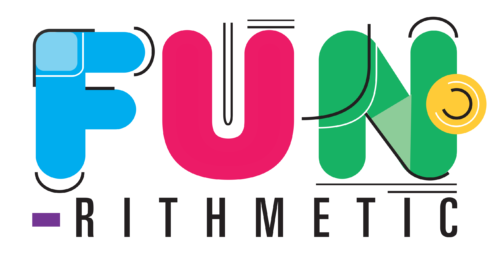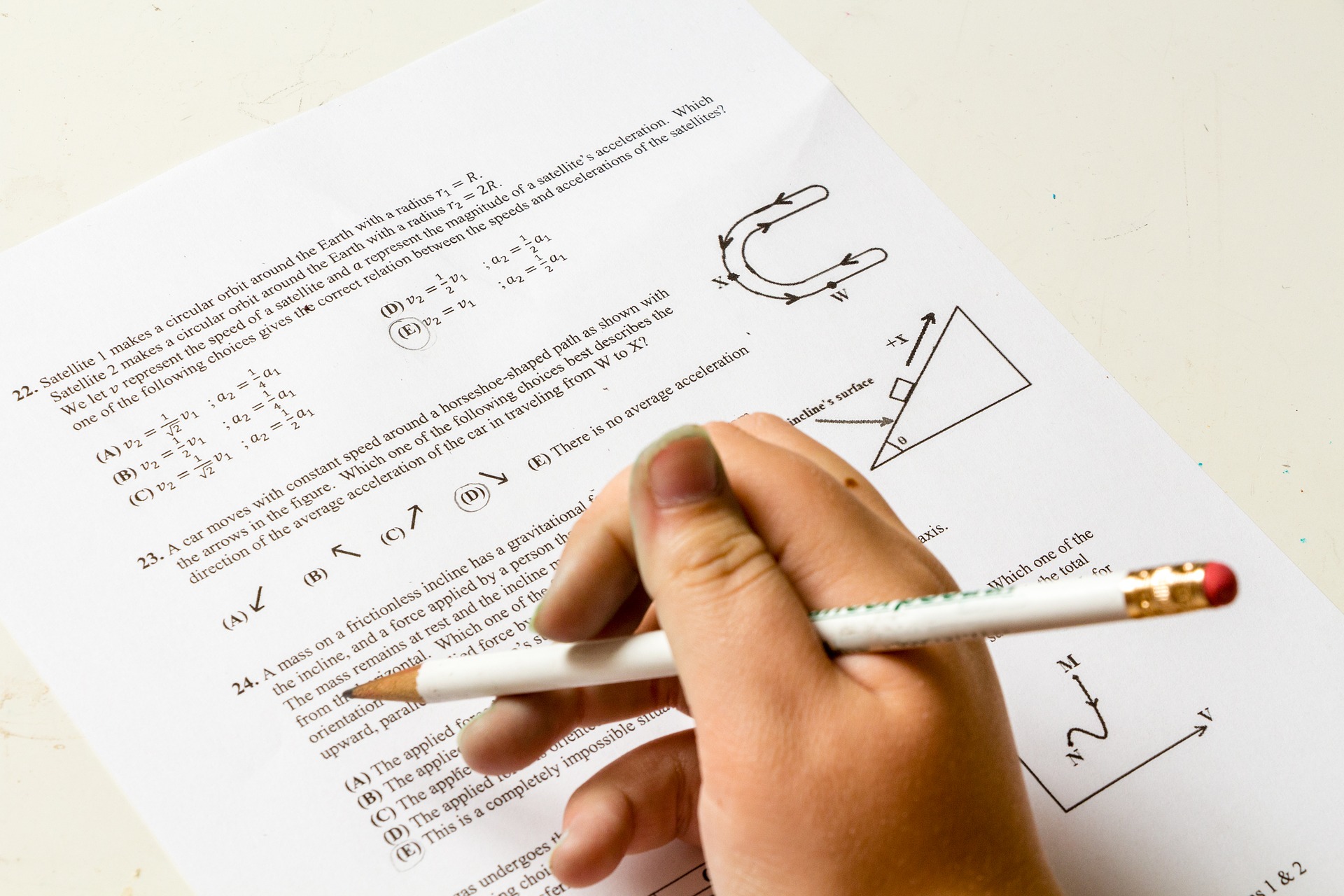It happens. Sometimes, you have zero time to plan algebra activities that are educational and engaging for your students (see my post about some time-management tips for busy teachers). You have to give them the dreaded worksheet. You can hear the students groan as you hand out the worksheet. And the rest of your class time is a battle between you and your students.
“Get busy!”
“Put your phone away.”
“Please stop talking to your neighbors.”
“Sit down and work.”
You get the point.
It’s not like you planned this. But then again, you didn’t have time to plan anything! Worksheets can suffice for algebra activities, occasionally. Practicing skills is essential, and worksheets usually include all types of exercises that students need to practice to build their skills. Most worksheets, however, don’t lend themselves to logical thinking and creativity. They overwhelm students. Worksheets can be simply turned into a fun algebra activity, though. You just need to know how to make them exciting and interactive!
Here are a few no- to low-prep suggestions for turning any worksheet into a more engaging activity that gets your students motivated to practice their skills!

1. Individual Whiteboards for Algebra Activities
I don’t know what it is about a dry erase marker and a small whiteboard. But students love them! Project one problem at a time on your smartboard, and have students complete it on their whiteboards. Students’ writing is larger on the whiteboards so you can see their work more easily as you check for understanding. Have students show you their whiteboards for a whole-group check. Then correct any misconceptions before moving on to the next exercise.
You can even consider dividing the students into groups (boys versus girls, one-half of the room versus the other, etc.). Give points to the group that displays the most correct answers on their whiteboards for each exercise. In between problems, you can also have students do a small brain break with their whiteboards to keep them motivated, engaged, and ready to learn! Be creative with your whiteboards….possibilities are endless!
2. Gallery Walk
When students see 45 math problems on one sheet of paper, they go straight into shut-down mode (especially those with attention deficits or learning disabilities). To help avoid this pitfall, break up the worksheet, literally! Cut up a worksheet into sections. Then, tape them on the walls around the room. Write at the top of each section how many exercises the students must complete from that section. But allow them to choose which exercises they want to complete.
Encourage students to ask a peer for help if they need it, as well. This is a great way to promote critical thinking (students will always try to find the “easiest” problem, but they don’t realize they’ll have to think about why it’s easier) and partner assisting in the classroom. Consider playing some light music in the background during this activity. Additionally, enlarge the worksheets on legal or ledger size paper to make viewing the problems easier for the students (helpful, but not mandatory). Students will appreciate the option to choose their problems and will be more motivated to practice their skills with this modified algebra activity!
3. Use Music
Adding music is a great way to liven up any activity in your classroom, such as a modified version of musical chairs. Project the worksheet on the smartboard and give students each a number (popsicle stick, sticky note, notecard, whatever you have) that corresponds with the number of exercises on the worksheet. Tell them to place their number, face down, on their desks. While you play some music, students will get up and walk around and then choose a desk when the music stops. They will then complete the exercise that corresponds with the number on the desk they chose. Repeat this process until you have completed 12 – 15 exercises.
If you want all the students to do the same exercises, then pick a random student after they have chosen desks. The whole class will do the exercise that corresponds with that student’s number. The movement between exercises provides students with a brain break between problems, and they’ll hardly notice they’ll be practicing their skills!
4. Create a Game
Students are always more motivated to practice if a game of some sort is involved. One popular game is trashketball. I can’t take claim to this idea (or name), but it’s genius! Divide students into groups of 2 – 3 and give all groups the same exercise to complete. For groups who correctly complete the exercise, allow one student from that group to toss a ball (even if it’s just a wadded up piece of paper) into the trashcan from varying lengths for points. The group with the most points wins! Other variations include letting students choose points from a deck of cards, using a random number generator or fair number cube (many smartboards have one available in their software tools).
5. Bribe (but Sparingly)
I’ll admit it….sometimes, I had a great activity planned that required some prep. However, I’d spend my entire planning period (plus more) in an IEP meeting that lasted way longer than it should have. Not only would my brain be exhausted, but I wouldn’t be quite prepared for the activity I planned for my class. I would have to resort to a worksheet for my class, knowing that the worksheet battle would surely follow. Enter my next tactic: bribing.
Very occasionally, I allowed students to listen to their music, with one earphone out, as long as they worked. Their phones, however, had to be off their desks (in their pockets or laps). I had to monitor students to make sure they weren’t spending more time trying to find a song (or on social media) than actually working. In a resource math class of 16 mostly freshman students with math disabilities, all students were working and engaged on their work thanks to my bribe. 🙂
More surprisingly, students would actually, legitimately ask for help if they were stuck. Maybe they understood that they would lose the music privilege if they quit working, so they were motivated to keep going. This strategy worked for me because my school allowed teachers to use devices in the classroom at their discretion. I also had a strong rapport with my students.
I don’t recommend bribing often. I think I did it about once a quarter. But it was a short-term, low-stress solution to get my students practicing their skills. I would end class by letting my students know how much I really did appreciate them allowing me a chance to recoup after a long meeting and being responsible young adults during my class. The praise worked wonders on my students as well, so it was a win-win for everyone.
6. Change the Scenery
Sometimes, students just need a change of scenery. If you planned a worksheet for the day, consider relocating your classroom and letting the students work on it somewhere different, such as an outdoor commons area, the gym or auditorium, the track, or even a grassy area outside on a nice day. Just be sure to ask permission from your administrator and post a sign on your door stating your location. Also, make sure students bring all necessary supplies with them. This will eliminate the need for students to go back and forth to the classroom. With this technique, both you and your students will feel refreshed and ready to tackle algebra activities while working in a new location.
7. Group, and Re-Group
Students like working in groups, but often they choose their friends to “work” with, and little work is actually accomplished among the talking, laughing, and gossiping! Remedy this situation by re-grouping students at the end of pre-defined intervals (5 minutes, the end of a song, etc.).
For the first grouping, allow students to group themselves into 2 or 3 and then work for the pre-defined interval time. When time is up, give the students a criterion they must meet in order to pick their next group members. For example, tell students to “find a partner whose name begins with the first letter as yours” or “find a partner wearing a same color as you”. Allow them to re-group. You may need to group stragglers together. Then, reset the interval and let them work! Continue this process until their worksheets are done.
Final Thoughts for Fun Algebra Activities
Sometimes, teachers must resort to using worksheets in the classroom, and that’s ok! With these tips, you can reduce most of the worksheet battle for algebra activities and motivate students to practice their skills (often times without realizing it!). Worksheets do serve a purpose in the classroom, especially on sub days, like my color-by-number activities. But getting your students active and engaged in completing worksheets is a difficult task. Hopefully you’ll be able to do just that with the tips I provided you here.
If you have any other suggestions or ideas, I’d love to hear them!

